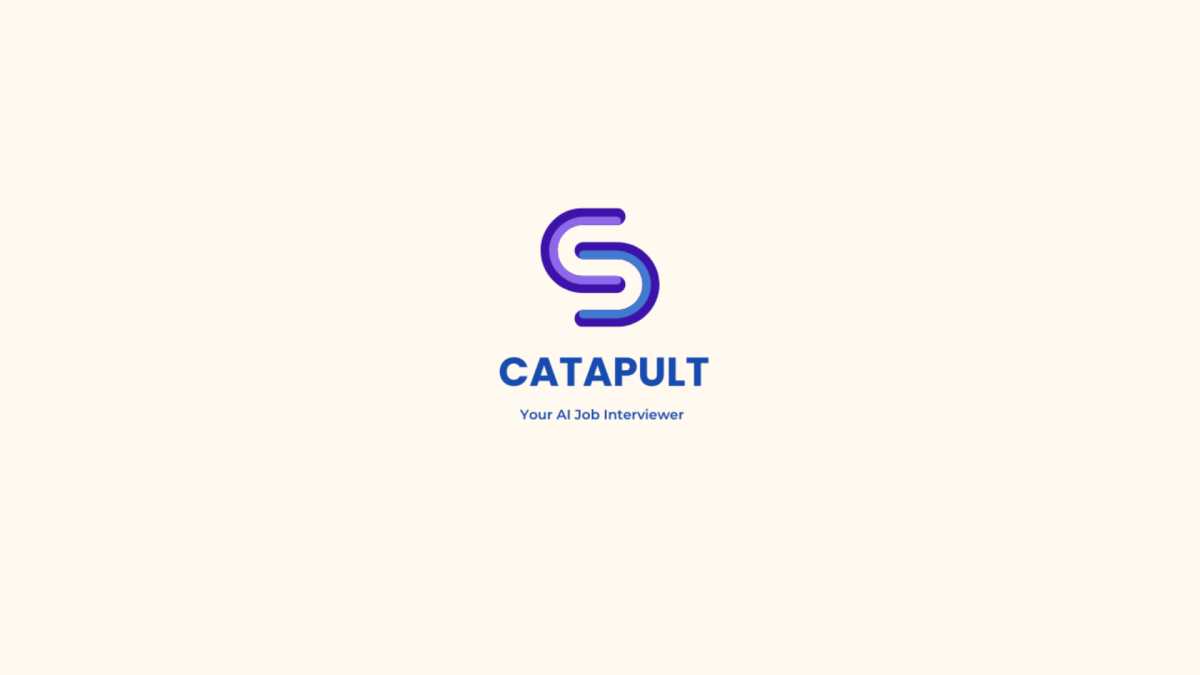Team 12: Felix Masselter, Taseer Samiullah, Lucas Johannsen, Mahima Panjwani
For a lot of applicant job interviews can be a challenging step in the recruitment process. From choosing the right answers to managing body language and tone, most candidates face intense pressure. With 92% of U.S. adults reporting interview anxiety, it’s clear that a solution is needed to boost confidence and help people feel more prepared (link).
That’s where our application “Catapult” comes in. Our AI-driven platform doesn’t just give you mock interviews; it immerses you in a personalised interview experience, simulating the real pressure of an interview room. With AI rapidly transforming job markets, Catapult is designed to help you stay ahead by offering real-time feedback and adaptive questioning, ensuring you’re interview-ready, no matter the role you’re aiming for.
Why Interview Prep is More Important Than Ever
The job market has never been more competitive. According to a McKinsey Global Institute report, over 30% of current tasks in many jobs may soon be automated (link). While this might seem problematic, it also unveils new opportunities to use AI as a tool to enhance your job readiness.
Catapult provides a futuristic, AI-powered solution for candidates who want to excel in their application process. As more companies integrate AI into their recruitment processes, Catapult ensures that you’re not just prepared but over-prepared for every aspect of the hiring experience.
How We Stand Out
Most interview prep tools focus on text-based feedback—offering responses to typed questions. But real-life interviews are so much more than that. Body language, tone, and the ability to think under pressure all play significant roles in determining your success. Our competitors, like Google’s Interview Warmup, fall short of replicating the actual experience being limited to textual input. They miss the essence of a real-life interview, leaving you only half prepared.
Catapult steps into this gap by offering immersive, AI-generated interview simulations that mimic real-world scenarios. When you walk into a virtual interview room, your AI interviewer asks questions based on your target industry and role. As you respond, Catapult not only evaluates your answer but also assesses your body language, tone, and even your eye contact. Instant feedback helps you adjust and refine your performance, making you feel more in control and confident for the actual interview.
How Catapult Stands Out
What sets Catapult apart from other tools is its use of cutting-edge generative AI models, like Large Language Models (LLMs) and Generative Adversarial Networks (GANs), to create realistic, adaptive interviews. With access to platforms like Glassdoor for data collection, Catapult ensures the questions are current and industry-relevant. And here’s the kicker: we don’t just stop at industry-specific questions. Our virtual interviewer can adjust based on how you respond, taking you deeper into your own personalized interview experience.
Plus, Catapult’s AI-powered system analyzes not just the content of your answers but also your delivery. You will receive instant feedback by evaluating your performance, making each mock interview a real step towards improvement.
Our current prototype as shown below misses the visual aspect, with some latency, lacking emotional recognition and doesn’t utilise our own trained Large Language Model with job specific data. Figure 2 however, gives a taste of what the actual application could look like with more time and budget where we could integrate Generative Adversarial Network (GAN).

Figure 1: Current prototype

Figure 2: Expected final application
Designed for Growth and Impact
Our aim is to reduce interview anxiety and improve job market success. We offer a freemium model, which means that you can access basic features for free while unlocking more advanced tools with a premium subscription. Alternatively, free users can gain access to freemium features through a referral program. This allows Catapult to cater to both casual users and those intensively preparing for multiple interviews.
Going further, we are also building partnerships with universities and career centers to integrate Catapult into formal education and professional training. Imagine having Catapult as part of your future career module at RSM, guiding you step-by-step until yo are ready to nail any interview.
Potential Challenges
One of the primary concerns with our GenAI system is ensuring that the system remains fair and unbiased. We know that AI in hiring has its skeptics with 34% of people believing AI tools may be prone to bias, potentially screening out qualified candidates.
If you would like to discuss how to get involved in this journey, do not hesitate to reach out to the team.


